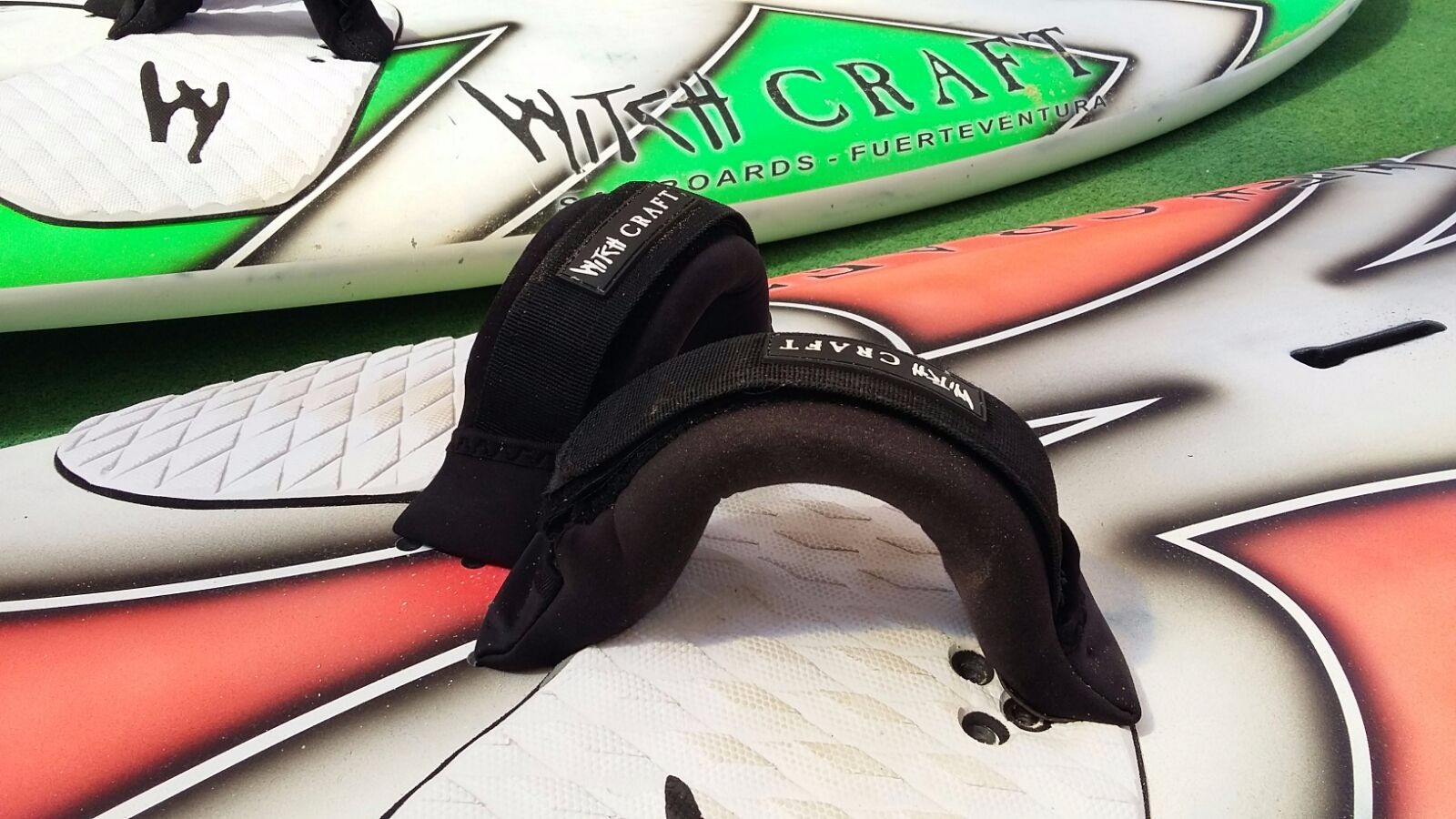When windsurfers discovered the benefits of footsraps back in the 80s the door was literally broken down for all manner of aerial shenanigans, as well as more locked in feels that would benefit those who love a cranking carve.
Over the years footsraps have been the tool windsurfers use for all manner of performance orientated riding, not least keeping that board’s rail engaged with wave faces. Due to speed resulting in G-forces exerted on kit and rider wave sailing as we know wouldn’t be possible without straps. Neither would many of those new school freestyle moves you see.
Unfortunately, as is the case when you add a new ingredient to the mix, footstrap setting can be a little confusing. Many riders simply don’t have theirs big enough, or know how they should be set. In almost all scenarios – from recreational sailing to freestyle and into waves – a bigger strap is key to commanding control of your board rather than it running away.
Bringing it back to wave sailing footstraps need to secure feet to board snugly, for sure, but there needs to be enough room for riders to get their toes across onto opposite rails, otherwise there’s simply no bite as you carve, resulting in less than fulfilling turns and the wave pushing back. In some cases this can be detrimental to rider experience resulting in possible injury. And actually on the point about injuries: by having straps set right you’ll reduce the risk of injury in any environment you’re sailing. If going over the falls when wave riding for instance you’re much less likely to tweak yourself if feet stay in the straps. OK, you may get rinsed a little more but having one foot pop out is far more risky. At the least there’ll be no pro-active engagement with the wave and utilising effectively of the board’s shape – you may as well be riding a barn door. And this is just with regard to bottom turning when faced with down the line conditions. Transfer the thinking to onshore wave riding and without a big enough strap your off the top will never be as efficient, tweaked or critical as it could be.
When straps are too small, try as a sailor might, they just can’t engage the opposite rail. Instead all that happens is a lifting of the heal which can result in spin out, among other things. But it isn’t just wave sailing where riders will benefit from bigger footstraps…
If you’re an aspiring freestyler who’s dabbling with the contorted manoeuvre side of the sport then it’s also key to get your straps set correctly. For all moves sailors will need to be positioned above the board, over the centre line, when taking off, sliding or rotating through each trick.
Taking break through freestyle move the Vulcan as an example: with straps too small, and Velcro barely covering toes, riders run the risk of possibly breaking their foot. Not to scare monger but it’s entirely plausible. Opening the strap eliminates this risk and will give way more control.
We appreciate the reluctance of riders making their straps bigger, the perception is they will get stuck during bail outs, which isn’t the case. It’s all about setting them correctly. Experimenting with width is worth the exercise, then it’s simply a case of making sure your feet can be slotted in far enough, tightening the Velcro to finish, but not so tight that your blood supply is cut off!
Comfort is actually a big thing with footstraps. Some straps do dig into feet which isn’t ideal. Witchcraft straps are wider and have more padding to spread loads further. Having footstraps twist can also be annoying. To alleviate this WC utilise four screws with the front strap being asymmetrically cut to increase ergonomic fitting. This results in the step in side being more open and therefore easy to slot into.
Have a look at any proficient wave sailor’s footstraps and you’ll see how big they are, for very good reasons. Same with freestyle riders. Even recreational freeriders will find benefit, especially during carve gybes, where again the engagement of the opposite rail will ensure a smooth and efficient transition. Have a bit of a play with your set up and see your sailing improve.






